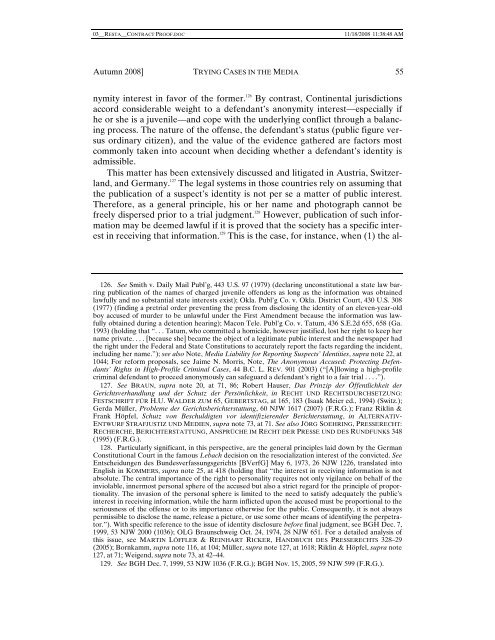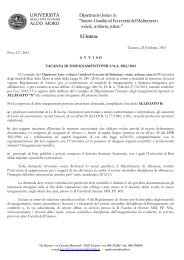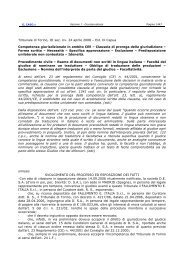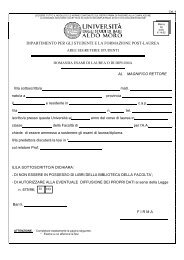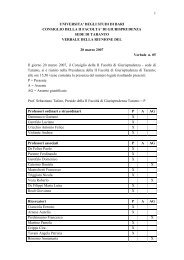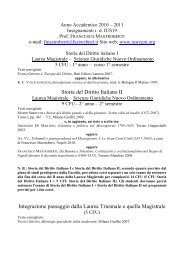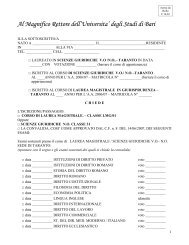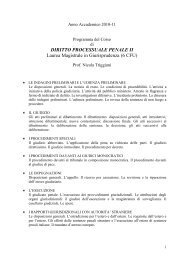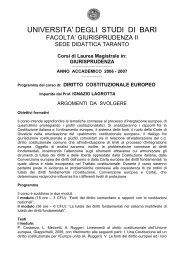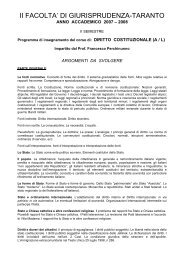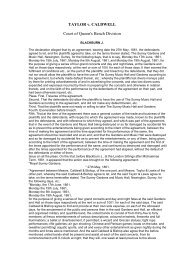TRYING CASES IN THE MEDIA: A COMPARATIVE OVERVIEW
TRYING CASES IN THE MEDIA: A COMPARATIVE OVERVIEW
TRYING CASES IN THE MEDIA: A COMPARATIVE OVERVIEW
You also want an ePaper? Increase the reach of your titles
YUMPU automatically turns print PDFs into web optimized ePapers that Google loves.
03__RESTA__CONTRACT PROOF.DOC11/18/2008 11:38:48 AMAutumn 2008] <strong>TRY<strong>IN</strong>G</strong> <strong>CASES</strong> <strong>IN</strong> <strong>THE</strong> <strong>MEDIA</strong> 55nymity interest in favor of the former. 126By contrast, Continental jurisdictionsaccord considerable weight to a defendant’s anonymity interest—especially ifhe or she is a juvenile—and cope with the underlying conflict through a balancingprocess. The nature of the offense, the defendant’s status (public figure versusordinary citizen), and the value of the evidence gathered are factors mostcommonly taken into account when deciding whether a defendant’s identity isadmissible.This matter has been extensively discussed and litigated in Austria, Switzerland,and Germany. 127 The legal systems in those countries rely on assuming thatthe publication of a suspect’s identity is not per se a matter of public interest.Therefore, as a general principle, his or her name and photograph cannot befreely dispersed prior to a trial judgment. 128 However, publication of such informationmay be deemed lawful if it is proved that the society has a specific interestin receiving that information. 129 This is the case, for instance, when (1) the al-126. See Smith v. Daily Mail Publ’g, 443 U.S. 97 (1979) (declaring unconstitutional a state law barringpublication of the names of charged juvenile offenders as long as the information was obtainedlawfully and no substantial state interests exist); Okla. Publ’g Co. v. Okla. District Court, 430 U.S. 308(1977) (finding a pretrial order preventing the press from disclosing the identity of an eleven-year-oldboy accused of murder to be unlawful under the First Amendment because the information was lawfullyobtained during a detention hearing); Macon Tele. Publ’g Co. v. Tatum, 436 S.E.2d 655, 658 (Ga.1993) (holding that “. . . Tatum, who committed a homicide, however justified, lost her right to keep hername private. . . . [because she] became the object of a legitimate public interest and the newspaper hadthe right under the Federal and State Constitutions to accurately report the facts regarding the incident,including her name.”); see also Note, Media Liability for Reporting Suspects’ Identities, supra note 22, at1044; For reform proposals, see Jaime N. Morris, Note, The Anonymous Accused: Protecting Defendants’Rights in High-Profile Criminal Cases, 44 B.C. L. REV. 901 (2003) (“[A]llowing a high-profilecriminal defendant to proceed anonymously can safeguard a defendant’s right to a fair trial . . . .”).127. See BRAUN, supra note 20, at 71, 86; Robert Hauser, Das Prinzip der Öffentlichkeit derGerichtsverhandlung und der Schutz der Persönlichkeit, in RECHT UND RECHTSDURCHSETZUNG:FESTSCHRIFT FÜR H.U. WALDER ZUM 65, GEBERTSTAG, at 165, 183 (Isaak Meier ed., 1994) (Switz.);Gerda Müller, Probleme der Gerichtsberichterstattung, 60 NJW 1617 (2007) (F.R.G.); Franz Riklin &Frank Höpfel, Schutz von Beschuldigten vor identifizierender Berichterstattung, in ALTERNATIV-ENTWURF STRAFJUSTIZ UND MEDIEN, supra note 73, at 71. See also JÖRG SOEHR<strong>IN</strong>G, PRESSERECHT:RECHERCHE, BERICHTERSTATTUNG, ANSPRÜCHE IM RECHT DER PRESSE UND DES RUNDFUNKS 348(1995) (F.R.G.).128. Particularly significant, in this perspective, are the general principles laid down by the GermanConstitutional Court in the famous Lebach decision on the resocialization interest of the convicted. SeeEntscheidungen des Bundesverfassungsgerichts [BVerfG] May 6, 1973, 26 NJW 1226, translated intoEnglish in KOMMERS, supra note 25, at 418 (holding that “the interest in receiving information is notabsolute. The central importance of the right to personality requires not only vigilance on behalf of theinviolable, innermost personal sphere of the accused but also a strict regard for the principle of proportionality.The invasion of the personal sphere is limited to the need to satisfy adequately the public’sinterest in receiving information, while the harm inflicted upon the accused must be proportional to theseriousness of the offense or to its importance otherwise for the public. Consequently, it is not alwayspermissible to disclose the name, release a picture, or use some other means of identifying the perpetrator.”).With specific reference to the issue of identity disclosure before final judgment, see BGH Dec. 7,1999, 53 NJW 2000 (1036); OLG Braunschweig Oct. 24, 1974, 28 NJW 651. For a detailed analysis ofthis issue, see MART<strong>IN</strong> LÖFFLER & RE<strong>IN</strong>HART RICKER, HANDBUCH DES PRESSERECHTS 328–29(2005); Bornkamm, supra note 116, at 104; Müller, supra note 127, at 1618; Riklin & Höpfel, supra note127, at 71; Weigend, supra note 73, at 42–44.129. See BGH Dec. 7, 1999, 53 NJW 1036 (F.R.G.); BGH Nov. 15, 2005, 59 NJW 599 (F.R.G.).


